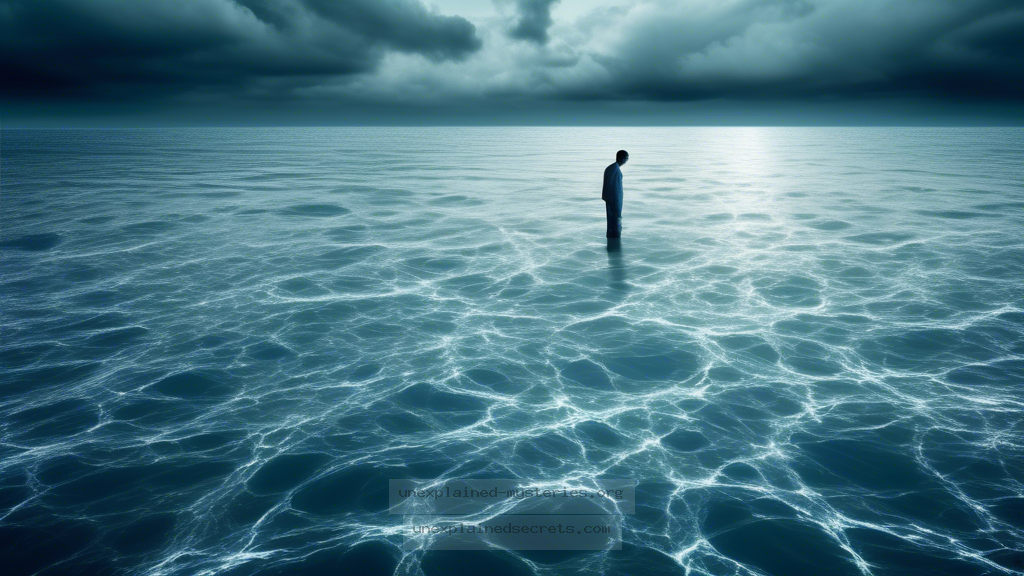What Causes the Unexplained Disappearance of Large Bodies of Water?
What Causes the Unexplained Disappearance of Large Bodies of Water?
The phenomenon of large bodies of water disappearing without a trace has puzzled scientists and researchers for centuries. This question matters not only for understanding the natural world but also for addressing environmental concerns, water resource management, and climate change. As we delve into this mystery, we will explore historical accounts, scientific theories, and practical implications of these baffling events.
Historical Context of Disappearing Water Bodies
Throughout history, there have been numerous accounts of lakes, rivers, and even oceans seemingly vanishing. One of the earliest recorded instances is the case of Lake Poyang in China, which has experienced dramatic fluctuations in water levels. Historical texts suggest that during the droughts of the Ming Dynasty, the lake shrank significantly, leading to concerns about water availability for agricultural practices.
Another notable example is the phenomenon of the disappearing rivers in the American West. The loss of the Rio Grande during periods of drought has also raised alarms about the sustainability of water resources in arid regions. These events have often been attributed to climate conditions, yet many instances remain unexplained.
Core Concepts: The Science Behind Water Disappearance
Several scientific principles help explain why large bodies of water may disappear. Evaporation, geological shifts, and groundwater extraction are primary factors. However, the phenomenon is not limited to these explanations. Other theories suggest that human activity, climate change, and even geological anomalies may play roles in these mysterious disappearances.
- Evaporation: High temperatures can lead to substantial water loss through evaporation, particularly in warmer climates.
- Groundwater Extraction: Over-extraction of groundwater can lead to reduced surface water levels.
- Geological Changes: Tectonic activity can alter water flow and create new paths for rivers.
Real-World Examples of Disappearing Water Bodies
Several documented cases illustrate the mystery of disappearing bodies of water. One of the most striking examples is the Aral Sea in Central Asia. Once the fourth-largest lake in the world, it has shrunk to a fraction of its original size due to extensive irrigation projects initiated during the Soviet era. This case highlights how human intervention can drastically alter the environment and lead to the disappearance of large bodies of water.
Another compelling example is the Lake Urmia in Iran, which has faced severe shrinkage due to climate change and water mismanagement. The lake has lost over 90% of its volume since the 1970s, leading to ecological collapse and public health crises in the surrounding regions.
Alternative Perspectives: The Role of Climate Change
While evaporation and human activities are significant contributors to the disappearance of water bodies, climate change presents a broader context. Rising global temperatures can lead to more extreme weather events, altering precipitation patterns and exacerbating drought conditions. The Intergovernmental Panel on Climate Change (IPCC) reports provide insight into the projected impacts of climate change on freshwater resources, indicating that regions already susceptible to water scarcity may experience even more dramatic losses.
Common Misconceptions About Water Disappearance
One common misconception is that disappearing water bodies are solely a result of natural processes. While evaporation and geological changes are indeed natural, human activities such as dam construction, agricultural practices, and urbanization significantly contribute to these phenomena. Understanding this duality is crucial for developing effective water management strategies.
Best Practices for Investigating Disappearing Water Bodies
Investigating the causes of disappearing water bodies requires a multidisciplinary approach. Researchers should consider collaborating across various fields, including hydrology, climatology, and environmental science. Here are some best practices for conducting investigations:
- Data Collection: Use satellite imagery and ground measurements to track changes in water levels over time.
- Hydrological Modeling: Implement models that simulate water flow, evaporation rates, and groundwater interactions.
- Community Engagement: Involve local communities in data collection and management practices, as they often possess valuable knowledge about changes in their environment.
Future Developments and Ongoing Research
Ongoing research continues to shed light on the complexities of disappearing water bodies. Scientists are developing advanced modeling techniques to predict future changes in water availability under different climate scenarios. These studies aim to provide policymakers with data-driven insights to make informed decisions regarding water resource management and conservation efforts.
Moreover, innovative technologies such as remote sensing and artificial intelligence are increasingly being utilized to monitor changes in ecosystems. These advancements hold promise for better understanding and potentially mitigating the effects of water disappearance.
Documented Cases: A Comparative Table
| Body of Water | Location | Year of Significant Change | Cause of Disappearance |
|---|---|---|---|
| Aral Sea | Kazakhstan/Uzbekistan | 1960s-Present | Human intervention (irrigation) |
| Lake Urmia | Iran | 1970s-Present | Climate change, water mismanagement |
| Lake Poyang | China | Ming Dynasty | Drought conditions |
| Rio Grande | USA/Mexico | Various years | Drought and water diversion |
Conclusion: Understanding the Enigma of Disappearing Waters
The unexplained disappearance of large bodies of water is a multifaceted issue that intertwines natural phenomena with human activity. Historical accounts, scientific theories, and ongoing research all contribute to our understanding of this intriguing mystery. As we confront the challenges posed by climate change and resource management, it becomes increasingly important to study these phenomena comprehensively.
In conclusion, as we continue to explore the complexities behind the disappearance of water bodies, we must remain vigilant in our efforts to protect our planet’s water resources. By addressing both natural and human-induced factors, we can work towards sustainable solutions for the future. ✅
Other Articles
Recent Posts
- What Happened to Flight MH370? The Conspiracy Theories That Still Haunt Us
- What Secrets Lurk Within the Walls of the Infamous Trans-Allegheny Lunatic Asylum?
- What Evidence Supports the Existence of Bigfoot in the Pacific Northwest?
- What Happened to the Indus Valley Civilization? Unraveling the Mysteries of Ancient Urban Life
- Can Telepathy Be Scientifically Proven Through Laboratory Evidence?







